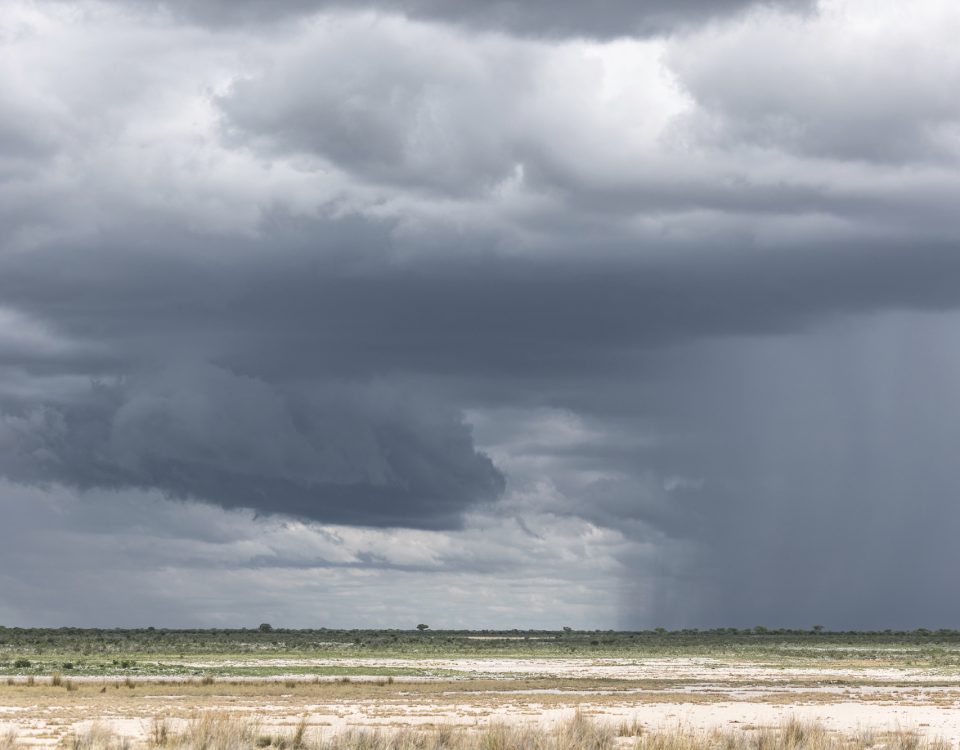Tracing the demise of Alexander’s behemoth at Walvis Bay
August 17, 2012Nature Notes – The exuberant jacaranda
August 17, 2012Compiled by Annabelle Venter
The green season is in full swing in Namibia! Rain is the conversation topic on everyone’s lips and it’s a great opener if you’re visiting our country. If you’re from the northern hemisphere, you might think autumn means shorter, colder days and falling leaves. Not in Namibia. Autumn is when the country reveals her softer side with many delights awaiting the adventurous traveller. Our main rains start around the end of January and by March the annual rainy season is at its peak, tailing off towards the end of April.
 After months of rainless skies and bone-dry landscapes, Namibians welcome the waving, green grasslands that soften the landscape. A typical autumn day in the central highlands starts with clear blue skies – a little damp from the previous night’s rain, but fresh and invigorating. Clouds start gathering around lunchtime and by late afternoon spectacular skies deliver equally impressive thunderstorms lasting anything from a few minutes to about half an hour. Very occasionally we’ll experience soft rain all day and we welcome this unusual respite. The evenings are cooler following the oppressive heat of summer, making it easier to sleep.
After months of rainless skies and bone-dry landscapes, Namibians welcome the waving, green grasslands that soften the landscape. A typical autumn day in the central highlands starts with clear blue skies – a little damp from the previous night’s rain, but fresh and invigorating. Clouds start gathering around lunchtime and by late afternoon spectacular skies deliver equally impressive thunderstorms lasting anything from a few minutes to about half an hour. Very occasionally we’ll experience soft rain all day and we welcome this unusual respite. The evenings are cooler following the oppressive heat of summer, making it easier to sleep.
By March, the ephemeral rivers are flowing, and beautiful yellow and purple flowers dance along the roadsides in the cooling breeze. Magnificent cloud formations and dark brooding skies, interspersed with the bluest of blue skies, make for unusual and dramatic photography.
Over in a brief flurry of colour
In the far north-east, floodwaters arrive from the Angolan highlands during autumn, swamping grain crops and displacing people, disrupting life in general when it is an exceptional rainy season. A great compensation though, is that the floodwaters bring fish to areas that are normally dry. This area has much higher rainfall than the central parts of Namibia, and if the crops receive rains early enough, a good harvest can be expected. Namibia’s coast has an average annual rainfall of less than 20 mm and it’s generally a lovely time to be at the seaside with sea temperatures mild and pleasant for swimming. March is also the perfect time for beach angling on the Atlantic coast. Days are cooler than inland, with average temperatures around 20˚C in March and April.
In April the rainy season comes to a gradual end, and desert plants such as the aloes and hoodias might still be flowering. The unusual spectacle of pools of water can be seen along the desert roadside, reflecting Euphorbia damaranas and the thunderclouds gathering overhead. There’s a fresh and balmy feel in Namibia in April, and a sense of wellbeing for animals and people. In Etosha there may be water in the pans after a good rainy season, and this is when the flamingos arrive to breed on the pan in their thousands. Sadly, they are unsuccessful if the rain has been insufficient and the pan dries out too fast.
By May the rain is usually over, but the country is still carpeted in grass that now starts turning green-grey. The first hint of winter appears when there’s a tangible change in the air – something difficult to describe, but real all the same! A colder snap towards the end of May might dispatch the proverbial autumn leaves from the trees in a flurry that lasts only a short while.
SOME USEFUL WEBSITES
http://www.namibiaweather.info/ shows current climatic conditions at private, professional stations scattered around Namibia. Some stations have weather webcams updated every five minutes, also current satellite images, bush-fire reports, tides and a forecast for anglers.
http://weather.namsearch.com/ has more specific conditions for each area including a four-day forecast and a weather history
http://www.climatetemp.info/namibia/
Did you know?
Deaths from lightning strikes have been declared the number-two weather-related killer in villages in northern Namibia, second only to floods. It’s a good idea to stay indoors if there’s a storm approaching.
This article appeared in the Autumn 2012 edition of Travel News Namibia.

